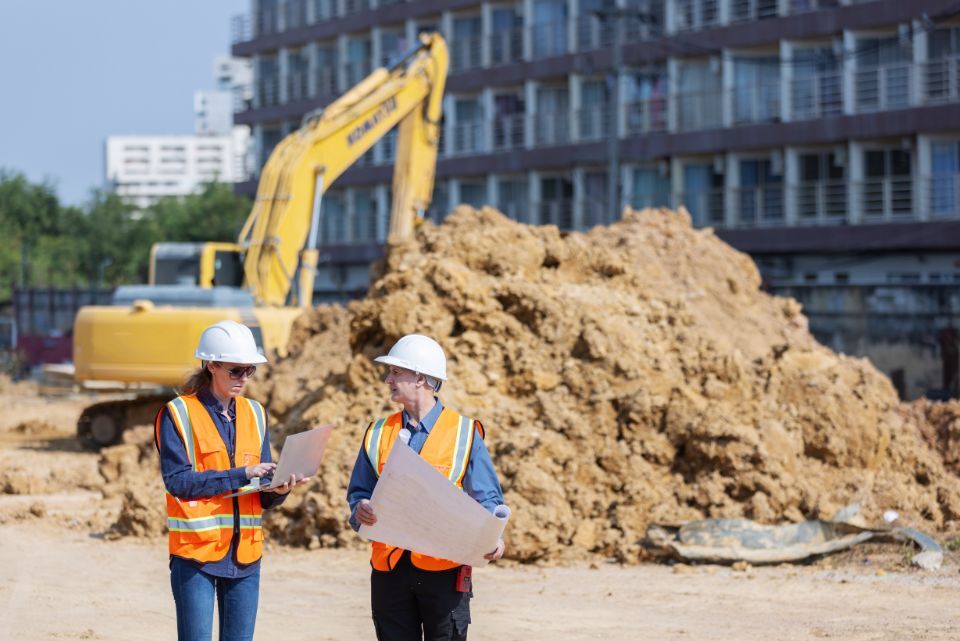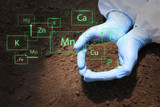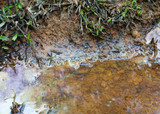Vapor Intrusion in Soil Sampling: Why Testing Matters
Vapor moves differently underground than it does in the open air. It doesn’t rise in a straight line or follow a predictable path. Instead, it migrates through soil and various porous materials. Sometimes, vapor slips beneath buildings, and other times, it disperses before anyone notices it.
This movement is known as vapor intrusion. While it might sound like a straightforward concept, the conditions that cause it, track it, and confirm it are anything but simple.
Why is checking for vapor intrusion necessary? And what exactly are people assessing during the evaluation process? Let’s look at why vapor intrusion testing in soil samples matters, one factor at a time.
Protect Indoor Air Quality
The primary reason for vapor intrusion testing is to ensure the air people breathe is safe. Health risks are always at the top of the list of concerns. It’s especially important indoors because vapor-phase contaminants can accumulate in high concentrations and remain for long periods.
Vapors originating in the subsurface can enter buildings through cracks in foundations, gaps in utility lines, or even through the concrete slab itself. Once inside, vapors become trapped, leading to ongoing exposure.
Volatile organic compounds (VOCs) such as benzene, trichloroethylene (TCE), and perchloroethylene (PCE) are common culprits. Prolonged inhalation at elevated levels has been linked to both acute symptoms—headaches, nausea, dizziness—and long-term risks, including some forms of cancer.
Because vapor levels fluctuate according to occupancy, HVAC use, and weather conditions, soil gas sampling is a valuable tool to understand the baseline risk beneath a structure. The goal is to evaluate the threat before vapors reach the air that people breathe. Testing also provides an important reference point for future monitoring efforts, helping identify whether changes over time reflect seasonal conditions or new contamination concerns.
Meet Regulatory Requirements
Testing for vapor intrusion is no longer optional in many contexts; it’s part of due diligence required by environmental regulators at the federal and state levels. The Environmental Protection Agency (EPA) has issued guidance on vapor intrusion assessments, particularly in connection with CERCLA cleanups, brownfield redevelopment, and other contaminated property scenarios. ASTM’s E2600-15 standard provides a framework for evaluating vapor encroachment during Phase I and Phase II environmental site assessments.
Individual states often take things further, requiring vapor intrusion testing in certain zoning areas or redevelopment districts. Some state programs set action levels lower than federal guidance, meaning what may be “acceptable” under one framework could still require mitigation under another.
Investigating early and thoroughly with tools like our soil vapor probe kits can help determine which standards apply and how to proceed. These requirements may also influence project budgets, timelines, and overall redevelopment feasibility, which is why proactive testing is far more cost-effective than delays caused by noncompliance.
Beyond regulatory pressure, vapor intrusion also creates financial and legal challenges for property owners and developers.

Minimize Legal and Financial Risk
Beyond health and compliance, vapor intrusion carries legal and financial risks that are frequently underestimated. Undetected or undocumented contamination can delay property transactions, limit redevelopment options, and expose parties to lawsuits. Buyers, sellers, and developers are commonly held liable for remediating vapor issues, even if they didn’t cause the contamination themselves.
Accurate testing allows stakeholders to make informed decisions about property value, insurance coverage, and future use. A vapor intrusion assessment can protect against retroactive liability and help secure financing, particularly for commercial or mixed-use developments. On the other hand, failing to test may result in more than cleanup costs; it can also undermine public trust and investor confidence.
By identifying issues early, remediation costs are often lower, negotiations are smoother, and property transfers proceed with fewer disputes. This preventative approach saves both time and money.
Interpret Site Conditions Correctly
Vapor doesn’t move in a vacuum. It responds to pressure differences, temperature gradients, moisture levels, and subsurface structure. Soil type, seasonal variations, depth to groundwater, and building construction can all influence how vapor intrusion occurs at the site.
Testing helps translate a complex set of variables into actionable data. Modeling tools may estimate risk, but field data from soil vapor sampling can confirm or challenge those assumptions.
Sampling from multiple depths and locations is imperative, especially during dry and cold months, when intrusion potential typically increases. Inaccurate assumptions about site conditions can lead to flawed risk assessments, which is why on-the-ground testing remains the standard for vapor intrusion decision-making. Careful interpretation of these conditions also helps determine whether risks are site-specific or may extend to surrounding properties.
Accurate site data doesn’t just reduce risk; it lays the groundwork for a strong conceptual site model.
Build a Better Conceptual Site Model (CSM)
No remediation or risk assessment can succeed without a strong conceptual site model (CSM), and soil vapor data plays a key role in developing an accurate model. A CSM is a working theory about how contaminants behave at a site—where they are, how they move, and who or what they might impact. Without vapor-specific data, even well-developed models can contain blind spots, especially when volatile compounds are involved.
Looking for vapor intrusion adds a critical layer to this understanding. It reveals vertical and lateral migration pathways that soil or groundwater data alone may miss. By sampling with a consistent methodology, teams can build a more accurate picture of how vapors behave beneath the surface and what exposure routes need to be addressed.
A complete CSM also strengthens communication among stakeholders by giving regulators, engineers, and property owners a shared reference point. A collaborative effort can be as valuable as the technical accuracy of the test itself.

Design Smart Remediation Plans
Vapor intrusion testing doesn’t just confirm a problem; it shapes how remediation is planned. Mitigation strategies vary widely from installing vapor barriers, passive venting systems, and active sub-slab depressurization systems. Choosing the wrong solution or placing it in the wrong location can waste resources and fail to address the underlying risk.
Testing results help define the scale of the problem, prioritize target areas, and support cost-effective design choices. For example, data showing shallow, concentrated vapor plumes beneath occupied structures may warrant more aggressive mitigation. Meanwhile, low-level detections along property boundaries may be managed with long-term monitoring or land use controls.
Well-designed plans don’t just mitigate current issues—they anticipate potential future conditions, ensuring solutions remain effective as buildings age or site use changes.
Verifying Long-Term Effectiveness
Without a clear understanding of the vapor pathway, remediation can become reactive rather than strategic. Investigations don’t stop after installing a vapor barrier or activating a sub-slab system. Long-term monitoring is necessary to demonstrate regulatory compliance and protect future occupants.
Post-remediation testing—conducted at six-month or 12-month intervals, depending on the system and jurisdiction—confirms that mitigation measures are still functioning as intended. Small changes to groundwater levels, building structure, or HVAC systems can shift vapor dynamics over time. Ongoing soil gas sampling provides a data-driven check against these variables, allowing for adjustments if needed.
In some cases, it may also help document when mitigation is no longer required, freeing property owners from unnecessary maintenance or reporting obligations. This assurance not only satisfies regulators but also provides peace of mind to current and future occupants.
Better Decisions Start Below Ground
Vapor intrusion isn’t always visible. It doesn’t stain the soil or create a strong odor. But its impact on health, compliance, property, and planning is significant. That’s why vapor intrusion testing in soil sampling matters; the accuracy of the data shapes every smart decision that follows.
From building conceptual models to supporting mitigation strategies and long-term monitoring, soil vapor testing provides the foundation for informed decisions. It helps protect people, guide planning, and reduce uncertainty.
Vapor intrusion testing reveals what’s happening below the surface and how it affects the air we breathe above it. Reliable results lead to smarter decisions about health, safety, and property use, but only if the right questions are asked and the right tools are used. Our soil gas sampling kits are built to deliver accurate, repeatable results every time. Let’s make every decision count.
Recent Posts
-
Selecting Soil Sampling Tools for Contaminated Site Work
Selecting the right tools for contaminated site work lays the groundwork for valid data and successf …December 10, 2025 -
10 Reasons Testing Groundwater Is Important
Groundwater is one of the most valuable resources we have. It provides drinking water for millions a …November 20, 2025 -
Why You Should Regularly Check Termite Bait Stations
In industries such as agricultural or groundwater management, unseen threats can quietly undermine y …November 12, 2025




